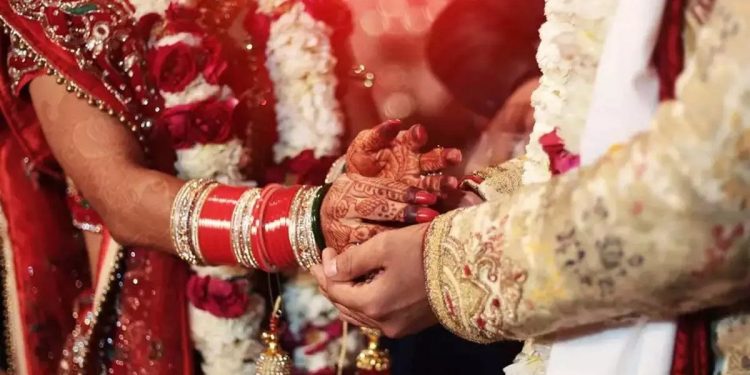According to a recent report of the Ministry of Statistics and Programme Implementation, the proportion of unmarried youths is on the rise in the country with Jammu and Kashmir topping the list. Its findings say, “The percentage share of the youth population (15-29 years) who are ‘never married’ has shown an increasing trend in the male population from 20.8 per cent in 2011 to 26.1 per cent in 2019 and a similar trend has been observed in the case of the female population.”
Another government report which was published in 2019 states that Jammu & Kashmir (29.1%), Punjab (25%), Uttar Pradesh (26.7%) and Delhi (26.5%) record the highest share of youngsters not getting married. On the other hand, the same report reveals that Kerala (18.3%), Himachal Pradesh (20.8%) and Tamil Nadu (20.2%) and Andhra Pradesh (20.7%) have the lowest percentage share. In the case of adolescent women within the age bracket of 15-19 years; 11.9 per cent have been married (by the age of 15) during 2005-06. And this was only 1.7 per cent in 2019-21.
Apparently, the age bar at the marriage seems to have increased over the passage of time. It is noteworthy to mention that, “a significant reduction has been observed in the level of age at first marriage for women in the 25-29 years age cohort as only 52.8 per cent of women have been first married by the age of 20 years during 2019-2021 as compared to 72.4 per cent in 2005-06.” “Males in the age bracket of 25-29 were first getting married at the 25 years of age during the year 2019-21.”
The recent survey report has not detailed any factor(s) to understand the burgeoning percentage of unmarried youth but the government officials have attributed this to “lifestyle and influence of celebrities.” However, it has been found out from the survey that the cases of child marriages are getting reduced over the years. The population pyramid also will undergo a change due to the declining fertility rates and increasing life expectancy.
The youth under 15 years are presumably going to decline and the responsibility of the country is going to increase towards aged people, the report further stated.
The following reasons can be taken into consideration to understand the increasing proportion of ‘unmarried youth’ in our country.
First and foremost could be economic instability which is haunting most of the youth. And this specific issue got more aggravated because of the pandemic. Those with less than `10,000 monthly income are completely unwilling to get married. In the case of affluent households, only 20 per cent of people are reluctant for marriage, according to a survey done in 2020 (Mar-April).
Marital preference comes in the second position. In the era of online dating and social networking platforms the frustration felt at not being able to find a match can be daunting. Fritzi-Marie Titzmann, in her book ‘Changing Patterns Of Matchmaking In India’ has also mentioned that “the upcoming matrimonial media allows youth a much wider range of choices now.”
In the Indian context, how can we ignore the significant role of caste and class? Among youth those who are willing to get married want a life partner from a similar income background, class, status and educational bracket.
Then comes the “shift in the attitude” on the significance of marriage. The youth with higher education don’t aspire to get married early. These days becoming a single father/mother is a luxury.
People consider this lifestyle as woke and modern. The best of the best couples committed for years together are thinking of getting separated in no time. And this might be connected with the issues pertaining to emotional and physical compatibility.
In considering or choosing a life partner a higher percentage of young men give primacy to looks and education. On the other hand, young women prefer men who are handsomely paid. Hence most of the couples get entangled within the circle of expectation and reality and at the end it paves the way for nothing productive. To conclude, the 21st century generation easily defines what should be the ‘marriageable age’ for them. As of now our country still continues to be very young. And the way the young choose to marry or build families will have a far reaching impact on tomorrow’s economy.
The writer is Assistant Professor, University of Delhi. Views are personal.






































